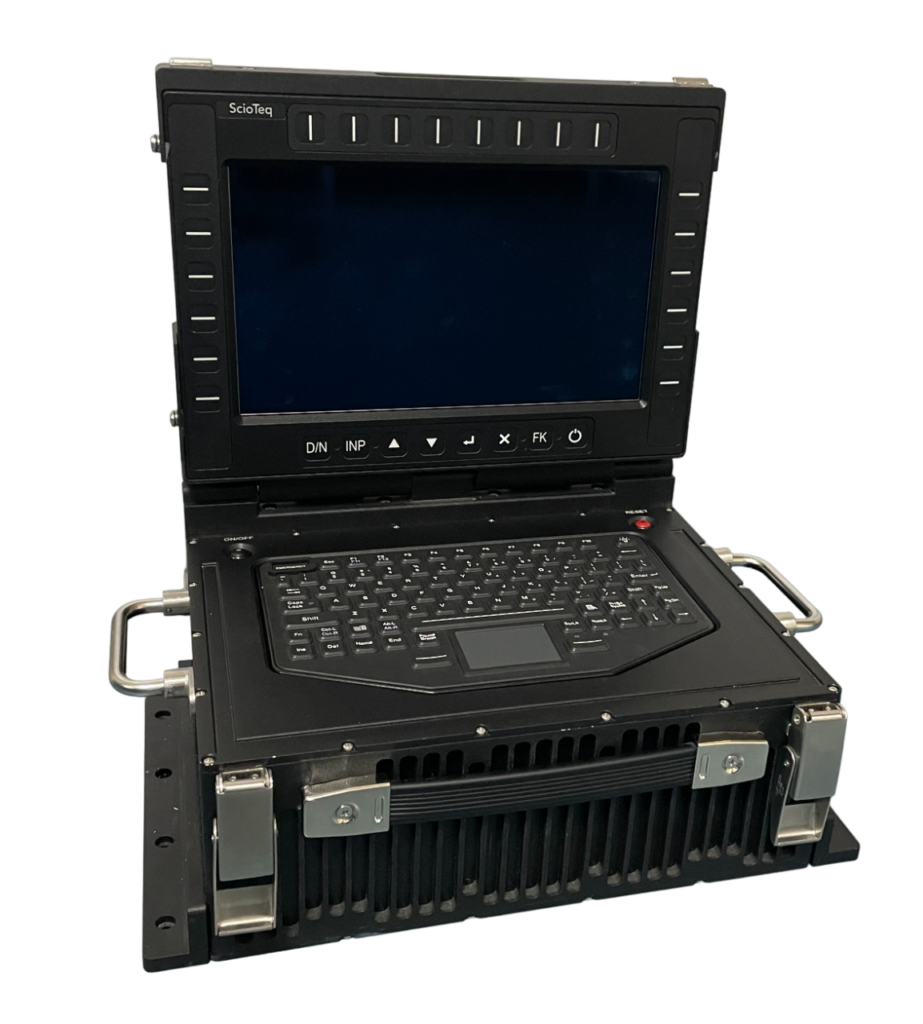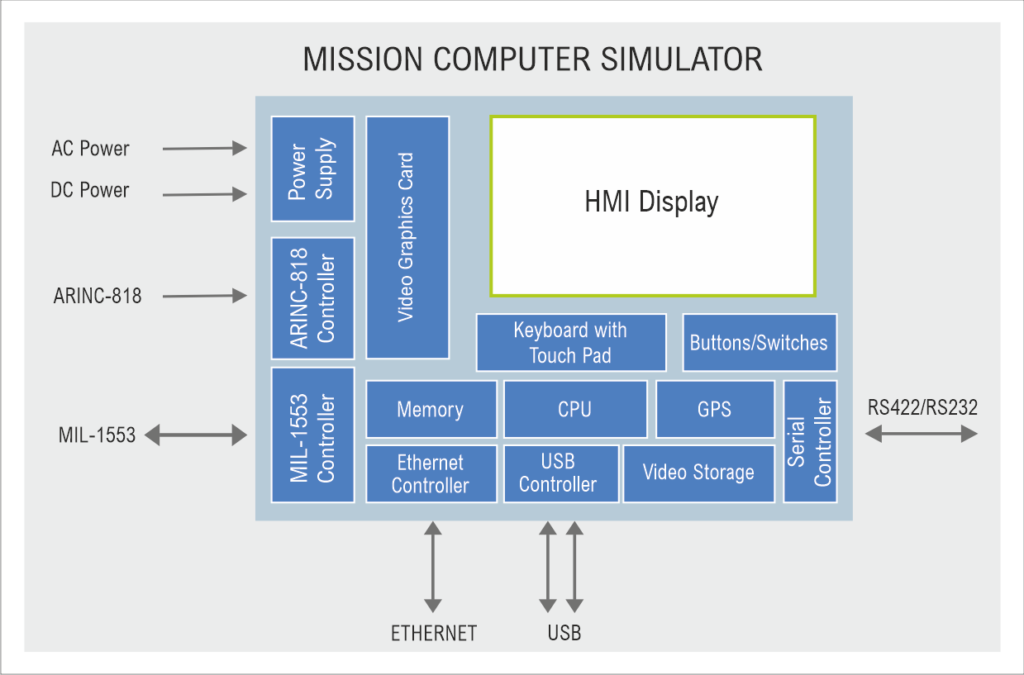Design and Development of Mission Computer Simulator
A Mission Computer (MC) supports the diverse needs of a multi-role combat aircraft, constantly adapting to provide pilots with the highest level of situational awareness. Being an airborne platform, precision and reliability are paramount for Mission Computers. Therefore, rigorous testing and functional validation are essential to ensure that this system meets the standards of optimal performance and safety before it can be cleared for commissioning.

The Mission Computer Simulator (MCS), designed & developed by Mistral, is a sophisticated solution engineered to meticulously evaluate the functionality and interfaces of a Mission Computer at bench level in the Lab and later at Flight Test Bed (FTB). It simulates a wide range of complex scenarios, including emergency situations and system failures, allowing for thorough evaluation of the mission computer’s response capabilities.
This case study showcases Mistral’s expertise in the design and development of a Mission Computer Simulator that meets SOFT (Safety of Flight Test) criteria and is qualified for MIL-STD-810 Environmental and MIL-STD-461G EMI/EMC standards.
The Customer
The customer is a leading Indian defense laboratory that focuses on research, design, and development of optical and electro-optical instrumentation for
military applications.
The Requirement
The customer wanted to simulate various functionalities and flight scenarios of a Mission Computer (Device Under Test, DUT) to ensure its precision and
reliability before it was qualified for airborne use. Mistral’s responsibility was to design and develop a high-end processor-based Mission Computer Simulator, which incorporates ARINC-818 video recording and playback features, GPS, 1553 MIL bus and GbE for communicating with the DUT. Mistral had to design and develop the complete portable integrated system, including the processing framework and GUI, various test scenarios, and then test and qualify the system.
The customer requirements included
- Design and Development of Hardware, Software and the Mechanical Chassis for Mission Computer Simulator.
- Safety of Flight Test (SOFT) Qualification of Mission Computer Simulator.
The Solution
Mistral conducted a comprehensive study on the Mission Computer Simulator requirements and proposed the below architecture.

The Mission Computer Simulator (MCS) was designed and built around the Intel Xeon-W, running RHEL. It interfaces with the DUT over various connections, including ARINC-818, MIL-1553, and Ethernet. ARINC-818 facilitates video input to the MCS, while MIL-1553 and Ethernet are used for command-control communication between the MCS and DUT. ARINC-818 receiver interface in the MCS supports it with high-bandwidth video reception, allowing real-time video capture and display with minimal latency. The system is also integrated with a dedicated video graphics card, enabling the display of video on the MCS through an integrated Display unit.
The Mission Computer Simulator operates with Red Hat Enterprise Linux (RHEL). The application software development includes a User Interface (UI) component and a backend data processing framework. The user interface was developed using QT software, while the backend processing module was written in C++ using the QT framework.
The UI application facilitates video capture and display, transmitting and receiving various commands and status updates over MIL-STD-1553 and GbE interfaces. Mistral developed and incorporated several commands into the GUI to test and validate various real-world situations encountered by the Device Under Test (DUT).
These commands include Mission Mode, Location and Speed of the Target, Track IDs (Video Track Ids), etc. The user can trigger a command from the simulator, prompting the DUT to send processed data over Ethernet or MIL-1553, which will then be displayed on the MCS.
The MCS triggers and sends commands and simulated INS-GPS navigation data to the Mission Computer (DUT). In response, the MCS receives status data, which is validated and also displayed on the MCS GUI.
This data includes details of targets being tracked, such as location, speed, etc. The Mission Computer can detect and track up to 50 targets simultaneously, and the data is sent to the MCS through the MIL-1553 and/or Ethernet interface.
Read full case study to know more!





